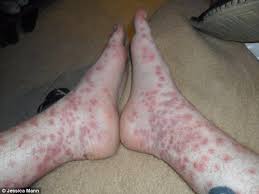How Infestations Originate
It often seems that bed bugs arise from nowhere. The bugs are efficient hitchhikers and are usually transported into dwellings on luggage, clothing, beds, furniture, and other items. This is a particular risk for hotels and apartments, where turnover of occupants is constant. Bed bugs are small and agile, escaping detection after crawling into suitcases, backpacks and belongings. Acquiring secondhand beds, couches and furniture is another way that the bugs are transported into buildings. Bed bugs also can be carried in on one’s clothing, shoes or wheelchair. Once bed bugs are introduced, they can crawl from room to room or floor to floor. They can also be transported throughout buildings on people and their belongings.

Unlike cockroaches and flies that feed on filth, there is often no relationship between bed bugs and cleanliness. Since the bugs feed solely on blood, pristine dwellings can be as vulnerable to infestation as are places of squalor. That said, poverty and privation can lead to increased risk of bed bug problems, as can the inability to hire a professional exterminator.
Some bed bug species are parasites of bats or birds, and may bite people if the wild hosts are no longer available. Although similar in overall appearance, the species of bed bugs that normally feed on bats, swallows, chimney swifts, pigeons or other wild hosts can be differentiated from those that prefer humans. Entomologists and knowledgeable pest managers can make this determination. If bat bugs or bird bugs are present, roosting and nesting sites should be the primary focus, and the animals should be removed and excluded from the building.
